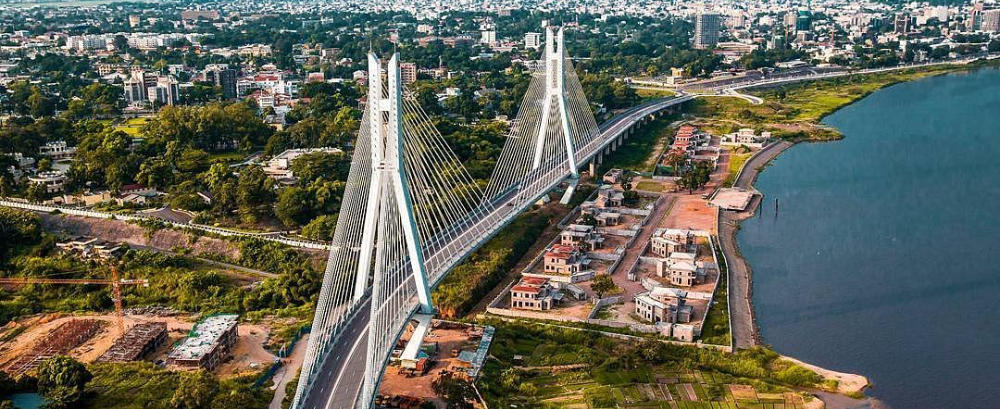
The Central African Republic (CAR)
April 12, 2025
The Democratic Republic of Congo (DRC)
April 12, 2025The Republic of Congo, also known as Congo-Brazzaville, is a resource-rich country in Central Africa. The country has a variety of mineral resources that contribute significantly to its economy, though the oil and gas sector remains the most dominant. Here’s an overview of the key mineral resources in the Republic of Congo:
Key Mineral Resources
- Oil and Natural Gas:
- Overview: Oil is the most important natural resource in the Republic of Congo, and the country is one of Africa’s leading oil producers. The oil and gas sector is the backbone of the economy, accounting for a large portion of GDP, government revenue, and export earnings.
- Major Oil Fields: The primary oil-producing regions are offshore in the Atlantic Ocean, particularly in the coastal area around Pointe-Noire. Notable fields include the Moho-Bilondo and Nkossa fields.
- Reserves: The Republic of Congo has substantial proven oil and natural gas reserves, with ongoing exploration activities expected to increase these figures.
- Potash:
- Overview: The Republic of Congo has significant potash reserves, particularly in the Kouilou region. Potash is an important mineral for agriculture.
- Reserves: The potash reserves in the Republic of Congo are among the largest in the world, with several projects, such as the Sintoukola Potash Project, being developed to exploit these resources.
- Iron Ore:
- Overview: Iron ore deposits are found in several regions of the Republic of Congo, particularly in the Mayoko and Zanaga areas. The development of these iron ore resources is seen as crucial for diversifying the country’s economy.
- Reserves: The iron ore reserves in the Republic of Congo are substantial. The Zanaga iron ore project is one of the largest undeveloped iron ore deposits in Africa, with significant potential for future production.
- Phosphates:
- Overview: Phosphate deposits are found in the Republic of Congo, particularly in the region of Hinda, near Pointe-Noire. Phosphates are essential for agriculture.
- Reserves: The phosphate reserves in the Republic of Congo are significant, with potential for development to support both domestic agriculture and export markets.
- Gold:
- Overview: Gold deposits have been identified in the Republic of Congo, particularly in the regions of Sangha and Cuvette. Gold mining is still in the exploration stage, but it holds potential for future development.
- Reserves: The gold reserves in the Republic of Congo are still being explored, with early indications suggesting they could be significant.
- Copper:
- Overview: Copper deposits are present in the Republic of Congo, particularly in the southwestern region near the border with Gabon. Copper mining is still underdeveloped, but it represents a potential area for future growth.
- Reserves: The copper reserves in the Republic of Congo are still being explored, with potential for further development.
- Lead and Zinc:
- Overview: Lead and zinc deposits have been identified in the Republic of Congo, particularly in the regions of Bouenza and Niari. These metals are important for various industrial applications.
- Reserves: The lead and zinc reserves in the Republic of Congo are significant, though largely underdeveloped.
- Diamonds:
- Overview: The Republic of Congo has diamond deposits, particularly in the Sangha region. The diamond sector is not as developed as in other African countries, but there is potential for growth.
- Reserves: The diamond reserves in the Republic of Congo are moderate, with both alluvial and kimberlite deposits. The sector is mostly artisanal and informal.
- Magnesium:
- Overview: Magnesium deposits have been identified in the Republic of Congo, particularly in the Kouilou region. Magnesium is an important industrial metal used in various applications.
- Reserves: The magnesium reserves in the Republic of Congo are significant, with potential for further exploration and development.
Investment and Extraction Situation
- Oil and Gas Dominance: The oil and gas sector is the cornerstone of the Republic of Congo’s economy. The country has attracted significant foreign investment in this area, particularly from major international oil companies. The government is focusing on maximizing revenues from oil and gas while exploring opportunities in natural gas production and refining.
- Emerging Mining Sectors: While oil and gas dominate, the Congolese government is actively promoting the development of other mineral resources such as potash, iron ore, and phosphates. The country aims to diversify its mining sector to reduce reliance on oil and boost overall economic growth.
- Infrastructure Development: Infrastructure, particularly in transportation and energy supply, is crucial for the efficient extraction and export of mineral resources. The Republic of Congo has been investing in improving its infrastructure, including roads, railways, and ports, to support the growth of its mining sector.
- Environmental and Social Impact: Mining activities in the Republic of Congo have significant environmental and social impacts. Issues such as deforestation, water pollution, and land degradation are major concerns. The government is under pressure to ensure that mining activities are conducted sustainably and that the benefits are shared more equitably with local communities.


